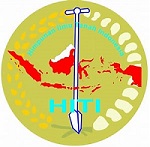Study of Soil Texture and Permeability in Pakcoy (Brasicca Rapa L.) Plantings in Timu Village Remboken District Minahasa Regency
DOI:
https://doi.org/10.35791/saej.v2i1.58864Keywords:
Soil Texture, Soil Permeability, Pakcoy PlantAbstract
This study aims to examine the texture and permeability of the soil planted with Pakcoy (Brassica rapa L) in Timu Village Remboken District. This research was conducted in Timu Village Remboken District Minahasa Regency for 3 months starting from September - November 2022. Soil sampling at this location was on land formerly planted with Pakcoy, with an area of 100 m². The method used in this study is the Survey Method and Laboratory Analysis. Soil samples were taken at a soil depth of ±20 cm at 5 (five) points where pakcoy was planted using a composite sampling method. Determination of sample points is done in a zig-zag from the letter Z at that location. Observational variables consist of soil texture using the Kang Biaw Tjiwan or pipette method and soil permeability using the Constant Head Permeability Test method. Based on the results of the study, it was shown that the texture of the soil in the research samples used was clay texture at P0 (no treatment) and similar to clay texture at P1 (treatment), with a permeability value of equally 11.43 cm/hour which permeability class of both samples was rather fast.
Keywords: Soil Texture, Soil Permeability, Pakcoy Plant
Abstrak
Penelitian ini bertujuan untuk Mengkaji Tekstur dan Permeabilitas Tanah yang di tanami Tanaman Pakcoy (Brassica rapa L) di Desa Timu Kecamatan Remboken. Penelitian ini dilakukan di Desa Timu Kecamatan Remboken Kabupaten Minahasa selama 3 bulan mulai dari bulan September - November 2022. Pengambilan sampel Tanah di lokasi ini yaitu pada lahan bekas penanaman Pakcoy, dengan luasan 100 m². Metode yang digunakan dalam penelitian ini adalah Metode Survei dan Analisis Laboratorim. Pengambilan sampel tanah diambil pada kedalaman tanah ±20 cm di 5 (lima) titik lokasi penanaman pakcoy dengan metode pengambilan sampel secara komposit. Penentuan titik sampel dilakukan secara zig-zag membentuk huruf Z pada lokasi tersebut. Variabel pengamatan terdiri dari Tekstur tanah menggunakan metode Kang Biaw Tjiwan atau pipet dan Permeabilitas tanah menggunakan metode Constant Head Permeability Test. Berdasarkan Hasil penelitian menunjukan tekstur tanah pada sampel penelitian yang dikukan adalah tekstur liat pada P0 (tidak perlakuan) dan berbeda tipis dengan tekstur liat pada P1 (perlakuan), dengan nilai permeabilitas yang sama 11,43 cm/jam yang tergolong kelas permeabilitas agak cepat pada kedua sampel itu.
Kata kunci: Tekstur Tanah, Permeabilitas Tanah, Tanaman Pakcoy
References
USDA United States Department of Agriculture. https://www.nass.usda.gov/. Diakses 8 Maret 2023
Basuki, W.W. 2012. Pengaruh waktu pemupukan dan tekstur tanah terhadap produktivitas rumput setaria splendida Stapf. https://scholar.google.com/scholar?hl=id&as_sdt=0%2C5&q=Pengaruh+waktu+pemupukan++dan+tekstur+tanah+terhadap+produktivitas+rumput+setaria+&btnG=. Diakses 15 Januari 2023
Haryanto, Eko, Suhartini T, Rahayu E, dan Sunarjono H. 1995. Sawi dan Selada. Penebar Swadaya. Jakarta. https://media.neliti.com/media/publications/54602-ID-none.pdf. Di akses pada tangga 01 November 2022.
Tewu, R.W.G., Theffie, K.L., dan Pioh, D.D. 2016. Kajian Sifat Fisik dan Kimia Tanah pada Tanah Berpasir di Desa Noongan Kecamatan Langowan Barat. https://scholar.google.com/scholar?hl=id&as_sdt=0%2C5&q=KAJIAN+SIFAT+FISIK+DAN+KIMIA+TANAH+PADA+TANAH+BERPASIR+DI+ DESA+NOONGAN+KECAMATAN+LANGOWAN+BARAT&btnG=. Diakses 20 Februari 2023
Zainab B.I., Rijaildi A., Nurfitriani1 A., Utami D.P.D., Rahman G.A., Aminudin A., Tayubi Y.R., Nusantara R.W., dan Iryanti2 M. 2019. Karakterisasi Tekstur Tanah Gambut di Lahan Lidah Buaya Di Kalimantan. http://proceedings.upi.edu/index.php/sinafi/article/view/829/746. Diakses 15 januari 2023.
Downloads
Published
How to Cite
Issue
Section
License
Copyright (c) 2024 Mirsad Makalalag, Joice M.J. Supit, Rafli I. Kawulusan

This work is licensed under a Creative Commons Attribution-NonCommercial 4.0 International License.
Authors who publish in this journal agree to the following terms:
Authors hold their copyright and grant this journal the privilege of first publication, with the work simultaneously licensed under a Creative Commons Attribution License that permits others to impart the work with an acknowledgment of the work's origin and initial publication by this journal.
Authors can enter into separate or additional contractual arrangements for the non-exclusive distribution of the journal's published version of the work (for example, post it to an institutional repository or publish it in a book), with an acknowledgment of its underlying publication in this journal.
Authors are permitted and encouraged to post their work online (for example, in institutional repositories or on their website) as it can lead to productive exchanges, as well as earlier and greater citation of the published work (See The Effect of Open Access).




